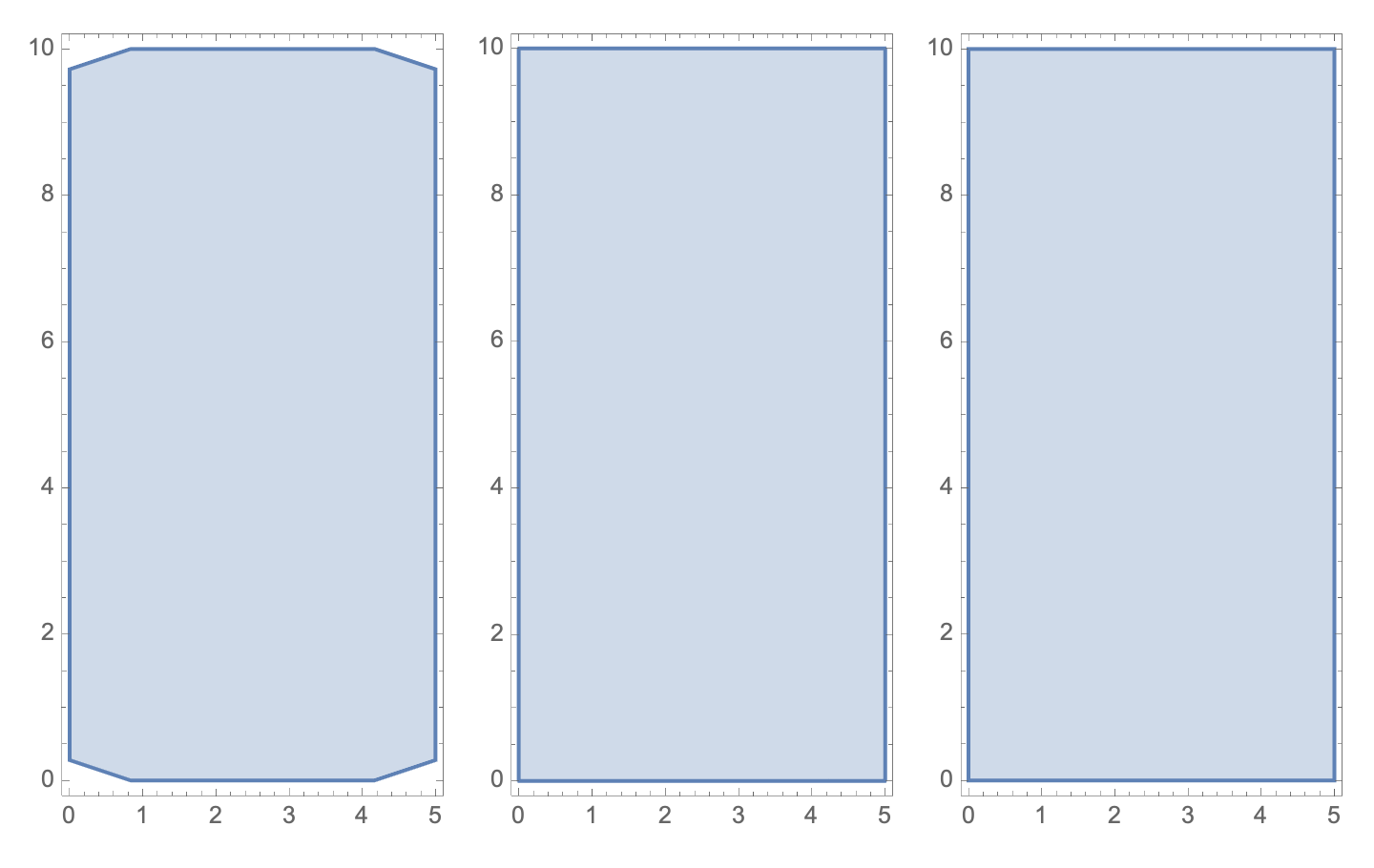I came across a glitch in RegionPlot when plotting a simple implicitely defined rectangular region: the corners of the rectangle are clipped. It appears only when setting PlotRange to Full while with an explicitely set identical PlotRange, the glitch vanishes. Furthermore, when defining the rectangle explicitely using ParametricRegion instead of ImplicitRegion, there is also no problem. For illustration see the code below. Any idea what may cause this? Ist it a bug or a feature? I suspect the observed behaviour might result from different meshing of the region internally, however, I wonder why the same region results in different plots depending on how PlotRange is set.
lx = 5;
ly = 10;
regi = ImplicitRegion[0 <= x <= lx && 0 <= y <= ly, {x, y}];
plotl = RegionPlot[regi,
Frame -> True,
AspectRatio -> Automatic,
PlotRange -> Full];
plotm = RegionPlot[regi,
Frame -> True,
AspectRatio -> Automatic,
PlotRange -> {{-lx/50, lx + lx/50}, {-ly/50, ly + ly/50}}];
rege = ParametricRegion[{x, y}, {{x, 0, lx}, {y, 0, ly}}];
plotr = RegionPlot[rege,
Frame -> True,
AspectRatio -> Automatic,
PlotRange -> Full];
GraphicsRow[{plotl, plotm, plotr}, ImageSize -> Large]
